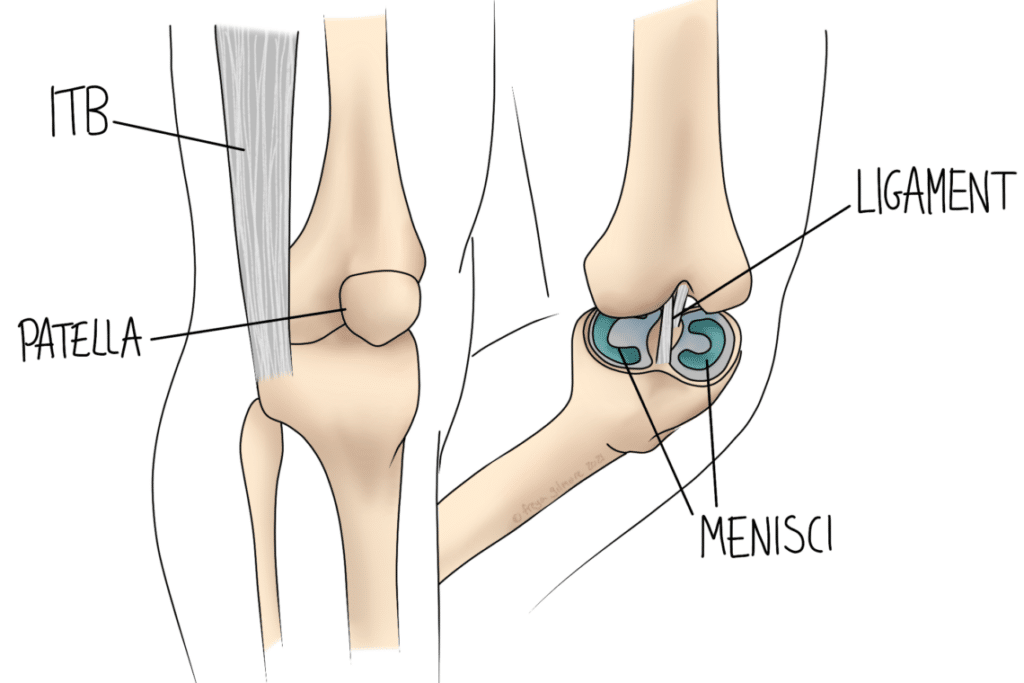

The knee is more than just the big hinge joint: it is made of three joints and a lot of connective tissue. Problems with one part often lead to symptoms in another, so your osteopath will look at the area as a whole at your appointment.
The knee cap sits within the quadriceps tendon and slides up and down the front of the main knee joint. Its presence makes knee movements much more efficient, so when it becomes symptomatic it can be quite debilitating.
Because of how it sits in the tendon, it is subject to forces from the quadriceps. Something as simple as tight muscles on the front of the thigh can put pressure on the joint between the patella and the rest of the knee. This might cause a feeling of tension or friction. If there is an underlying problem, or this persists, it can lead to cartilage injury or osteoarthritis.
Sometimes the quaricep muscles are unbalanced. Often this means the one on the inside of the thigh (vastus medialis) is relatively weak. When the muscle group contracts, force is not equally placed on the knee cap, and it is encouraged off-centre. This can cause similar problems to those listed above, along with a feeling of instability or clicking.
Your osteopath can help with tight or weak muscles, and work with a suffering joint to give it a better chance at healing itself.

The ITB is a broad piece of tissue that runs down the outside of the thigh and attaches to the side of the knee. It is not very stretchy or contractile, and is controlled by a muscle on the outside of the hip (TFL). The role of the ITB is to stabilise the knee. When it feels tight, it’s usually the TFL pulling on it to try and support the knee.
Runners are often quite aware of the ITB, and may have been advised to foam roll it. This is controversial, as studies show mixed results about whether the band even responds to direct pressure. It makes more sense that the TFL muscle would respond more to rolling, but we need to think about why it’s overworking in the first place. There may be a problem developing in the joint that the body is trying to limit and protect. We will assess the whole knee complex at your appointment to get to the bottom of your symptoms. The sooner we can address this the better, as tightness in the ITB is associated with bursitis and snapping hip syndrome.
Inside the main hinge joint, there is a lot of cartilage to help support and stabilise the joint. The ACL and PCL ligaments are also present for stability. A hinge joint under as much pressure as the knee is vulnerable to injuries caused by slipping. This is exactly what the PCL and ACL are there to prevent.
Beyond the usual cartilage at the ends of the bones that make up the main joint, there are also two C-shaped pieces. These are called the menisci, and they provide cushioning as well as improving the connection between the bones. The menisci can be injured by twisting through the knee while weightbearing, making it a common sports injury. Cartilage is slow to heal, but we can help to support the joint and maximise nutrient flow to the area. Injuries like this can also affect the way you move generally, so we will look to the rest of the body and ensure nothing is overworking to compensate.
Start addressing your knee problems today: click here for an appointment in Leicestershire.